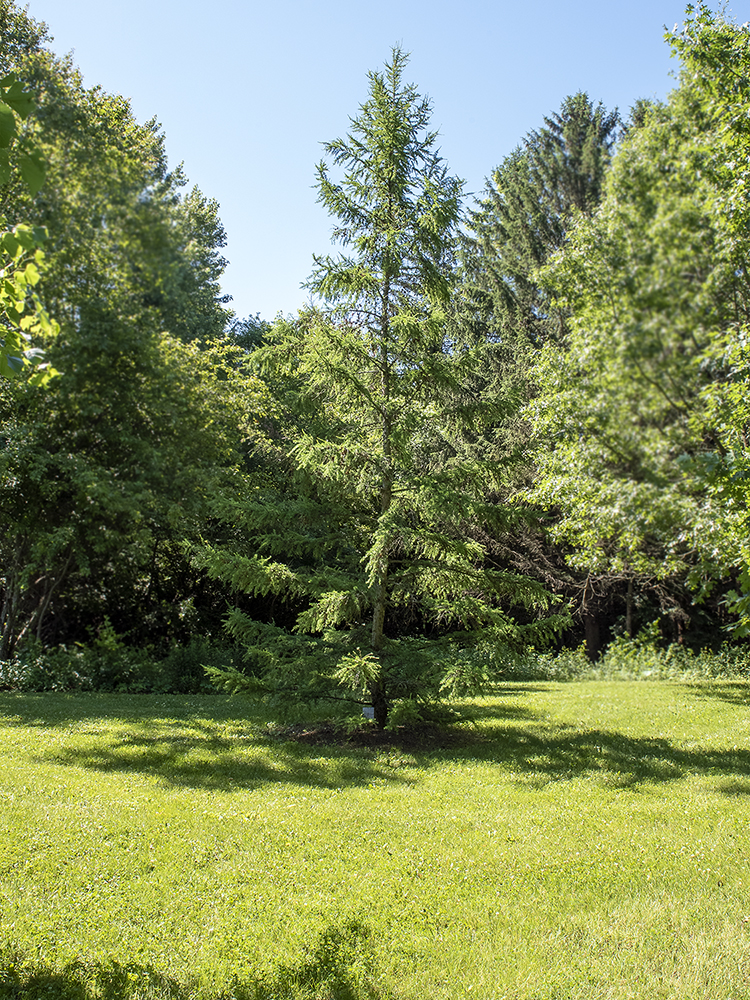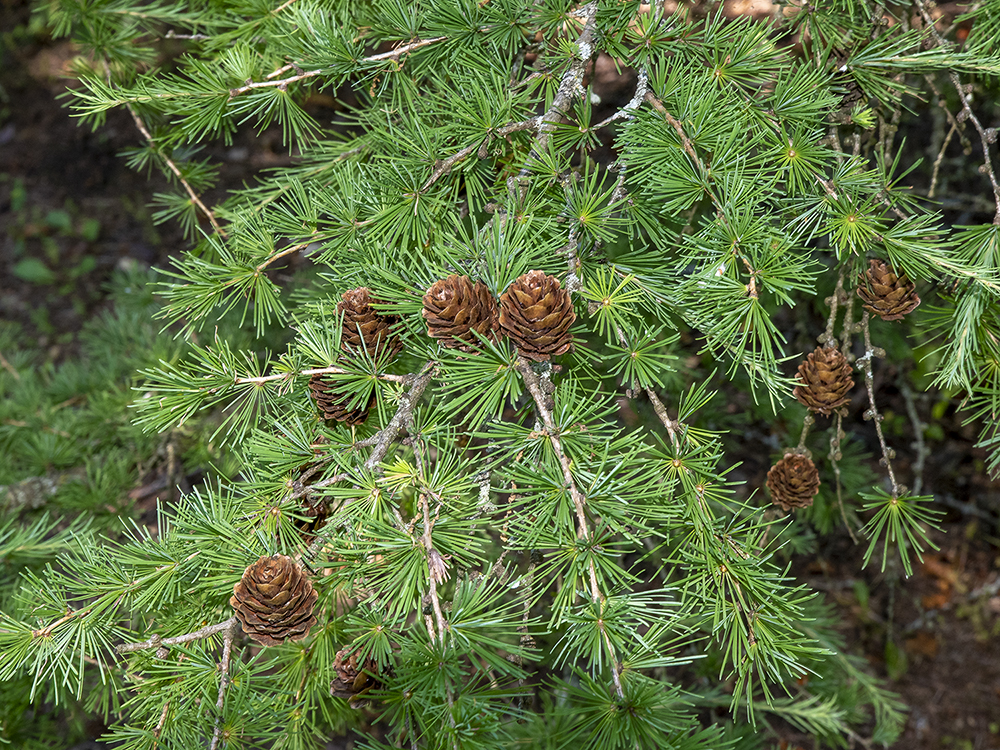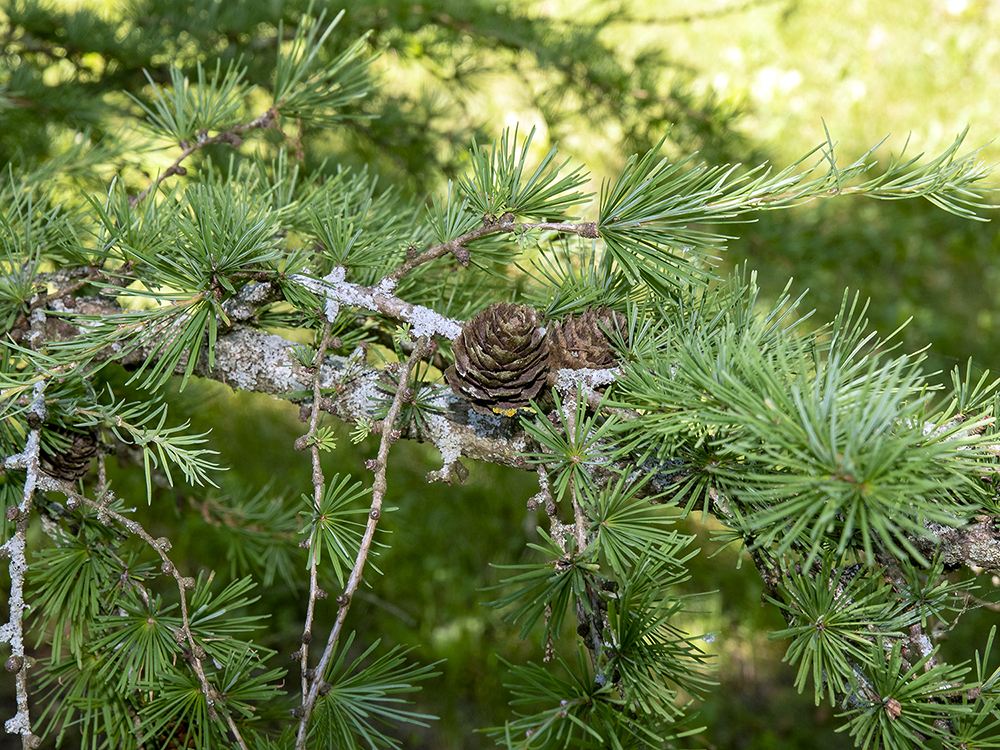| Description | Japanese Larch (Larix kaempferi) Since it is deciduous (dropping its needles in the fall) it looks like a dead Christmas tree in the winter. |
|---|---|
| Pronunciation | (LAR-iks)(KEM-fer-eye) |
| Plant Type | Trees Coniferous, Site author's observations |
| Hardiness Zone | 4-7 |
| Sunlight | full |
| Moisture | average, moist |
| Soil & Site | average, moist |
| Temperature | likes cool summers and cold winters |
| Fruit | small cones. up to 1.5 inches, erect, conical, spring violet cones mature to orange-brown before turning dark brown, cones are of ornamental value |
| Leaves | needles in clusters off of spurs on the branches, 20 or more needles per cluster, bright green in spring, yellow to bright yellow in fall |
| Stems | pendulous branchlets |
| Dimensions | 70 by 25 feet or more, open pyramidal, slender pendulous branchlets, fast-growing |
| Propagation | seeds, stratification can help germination |
| Native Site | Japan |
| Cultivar Origin | Introduced to America in circa 1861 |
| Misc Facts | Genus name is the classical name for larch trees. Specific epithet honors Engelbert Kaempfer (1651-1716), German botanist and plant collector who visited Japan in the late 1600s". (#144) SYN: Larix leptolepis |
| Author's Notes | In a yard that I maintained for many decades there was an existing Japanese Larch. Very nice in the spring with the bright green clusters of needles and purplish cones. Soft looking the summer because of the tuff of needles. Looked like a large dead Christmas tree during the winter. |
| Notes & Reference | #01-Manual of Woody Landscape Plants (Michael Dirr), #144-Missouri Botanical Gardens web site (www.missouribotanicalgarden.org), #202-American Conifer Society (www.conifersociety.org), #245-Trees for American Gardens (Donald Wyman) |

Cart



